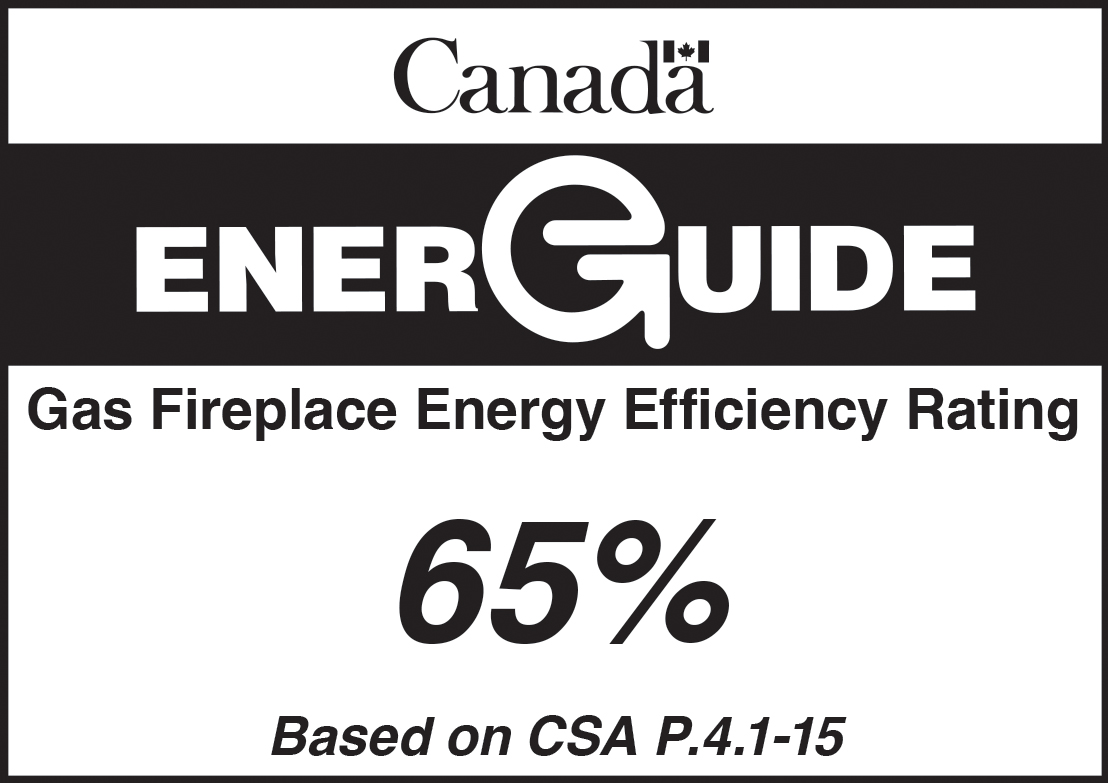Fireplace Efficiency
Fireplace Efficiency
The best way to determine the efficiency of a gas fireplace is to look on the EnerGuide label for its Fireplace Efficiency (FE) Rating based on the CSA-P.4.1 test method.
This FE number may be found in a number of different locations including the product literature, or displayed in the store.
If you are unable to locate the P.4.1 FE on site or in the available literature, please check with the manufacturer or search using the NRCan Gas Fireplace Database.
EnerGuide Fireplace Efficiency (FE) Labels may also be provided on literature containing multiple products. Although this multi product label does not contain the FE, is a good indication the models included are registered with NRCan and the CSA P.4.1 efficiency will be readily available.
The CSA P.4.1 is a sophisticated test to determine the usable heat output of a gas fireplace. However the choice to purchase a gas fireplace is rarely related to efficiency alone. To make the best selection is it always a good idea to consult with a specialty hearth retailer to assist with balancing aesthetics and heat output, to find the right size and model for your home.



About EnerGuide
Since September 2003, manufacturers who sell gas fireplaces in Canada have been required by federal regulations to test and verify the energy efficiency of their models. The Canadian test standard, CSA P.4.1., is used to generate a Fireplace Efficiency (FE) rating, expressed as a percent efficiency. The higher the number, the more energy efficient the product.
This requirement affects all Natural gas and propane Freestanding stoves, Inserts and Zero Clearance fireplace models sold in Canada. Gas logs are designed solely for aesthetic purposes and are not tested for efficiency.
The FE number is shown as a percentage. Simply put it is the comparison of two pieces of information, the input value of the gas versus the usable heat output to the home.
Examples of this calculation
Fireplace #1 may have a gas input of 30,000 BTUs (British Thermal Units) and a useful heat output of 20,000 BTUs which would produce an efficiency of 66.6% .
Fireplace # 2 could have a gas input of 40,000 BTUs and also have a useful heat output of 20,000 BTUs which would produce an efficiency of 50%.

CSA P.4.1
The Canadian Standards Association (CSA) P.4.1 test method, introduced in 2003, was developed using a consensus based process. The committee responsible for creating this standard was comprised of industry, utility representatives and regulatory authorities.
Historically, different methods have been used to measure the efficiency of gas fireplaces. These test methods were originally created for wall heaters, space heaters and furnaces. The energy efficiency numbers generated by these test methods did not reflect the actual real life performance of gas fireplaces.
A consistent test was needed to provide an ’apples-to-apples’ comparison when discussing fireplace efficiency. The P.4.1 test was designed to provide a standardized test methodology that as far as possible reflects how fireplaces are typically operated in the real world.
The P.4.1 test is the only test method for gas fireplaces recognized by the Government of Canada. Because it is the only test method designed specifically for gas fireplaces, there are several States that reference the P.4.1 test efficiency when issuing rebates.


For more support and information on Fireplace Efficiency (FE), EnerChoice, or EnerGuide Labeling for Gas Fireplaces, please contact us at energuide@hpbacanada.org.